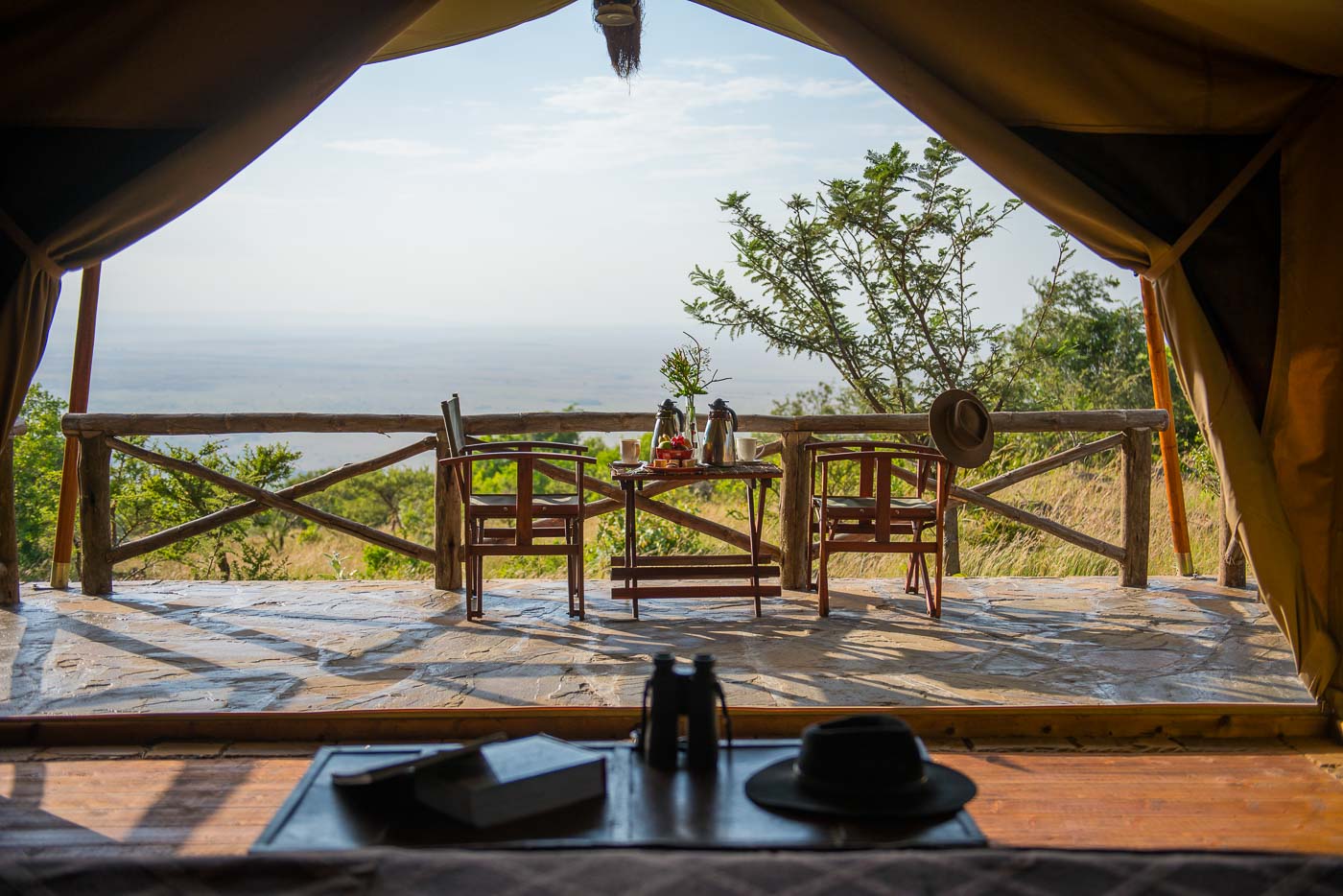Sand Rivers Selous is a secluded lodge in the Selous Game Reserve offering a view of the majestic curve of the Rufiji River. From its veranda, you can take in the magnificent sunset and the relaxing ambiance of the surrounding wildlife. The beauty of this glamping lodge was first made famous by Richard Bonham in 1984 who used this area of the Selous for his famous portered walking safaris, when the area was all but unknown.
Sand Rivers is set on a rocky peninsula with magnificent views over a vast sweep of the Rufiji River, its exposed sandbanks home to hippo, crocodile, and spectacular bird life. There are eight large and airy double, or twin-bedded cottages, each with its own spacious bathroom with flush toilets and powerful showers. Beds are four-postered with soft mosquito netting that ties back during the day. Each cottage is completely open-fronted, with an expansive veranda set on stilts, giving each a stunning and private view over the river. Electric lights, standing fans, and water heaters are solar powered.
Enjoy a large open bar and dining area. There is also a swimming pool shaded by an ancient baobab tree on the banks of the river, in which you can cool off in the heat of the day. An unusual combination of steep wooded hills, open miombo woodland, grassy plains, and marshes interlaced with lakes and dry sand rivers, this scenic area boasts an impressive variety of game, bird life, and wild flowers.
The main dining table in the central mess area is made of an enormous tree that was washed down the river by a storm and is the focus for lunch and dinner. Breakfast is generally a relaxed affair with guests either eating in the lodge or having a bush breakfast under the shade of a tree.
Outside the central mess area is the swimming pool, set into the rocks on the river’s edge, and shaded by an ancient baobab tree thought to be more than 1,500 years old. This is the perfect place for relaxing and gazing out over the view of endless water. Armchairs and sofas abound, and the bar is close by, along with a library well-stocked with books on the area.
GLAMPING.COM, the industry authority on all things glamping for the discerning experiential traveler, is a highly curated collection of glamping properties around the globe. GLAMPING.COM believes in extraordinary travel – destinations that offer unique, once-in-a-lifetime experiences. With over 800 glamping sites on six continents, the company’s mission is to empower people to try this form of experiential travel with hand-selected, personally vetted properties. Find inspiration on www.glamping.com and Facebook, Instagram and Twitter @glampingdotcom.









